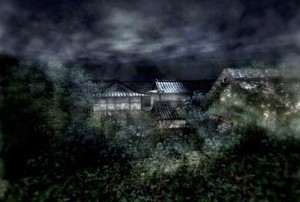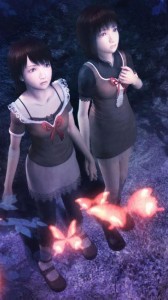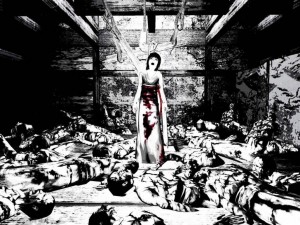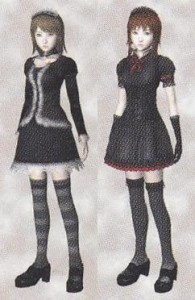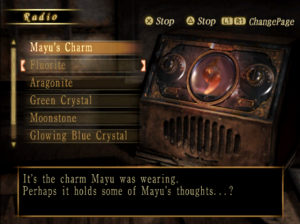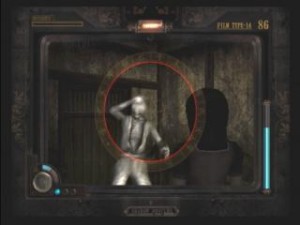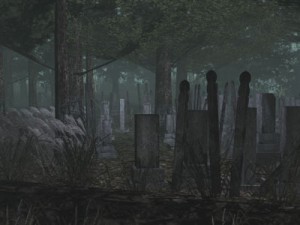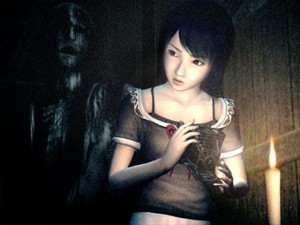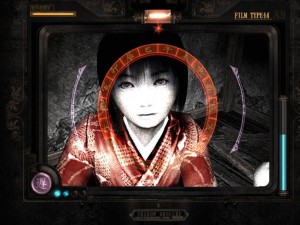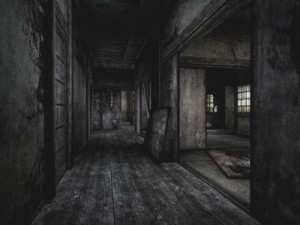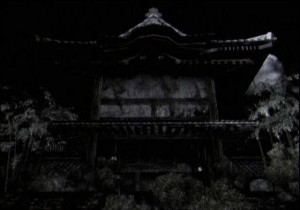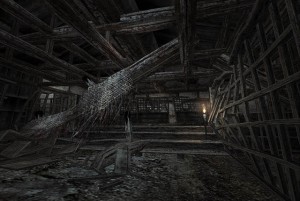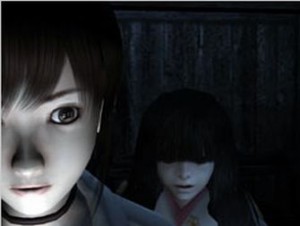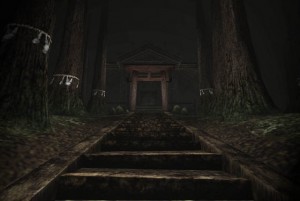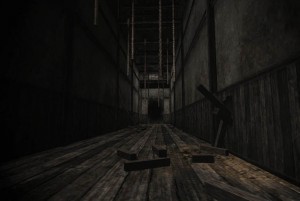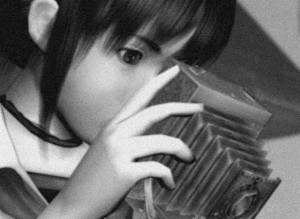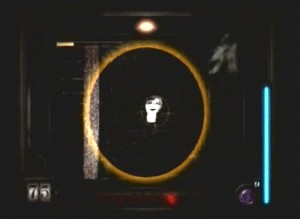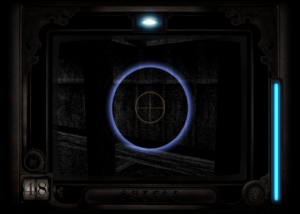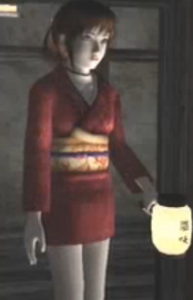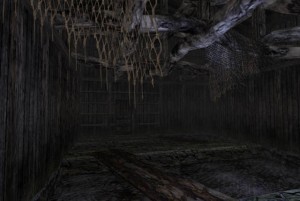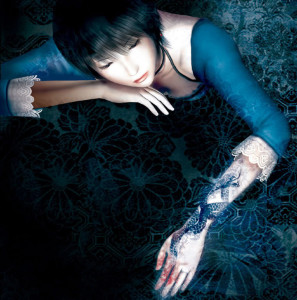 The Rule of Three is all well and good, but it doesn’t always work. It’s also very rare that all three parts in a trilogy are of equal quality, and while the Fatal Frame series ultimately continued to a fourth and a fifth instalment, The Tormented is the tail end of a trilogy, in more ways than one. It’s still a fine piece of horror. In fact, on its own merits, it’s probably better than many horror games out there. But by comparison with its predecessors and even with its immediate successor, I felt that something was missing.
The Rule of Three is all well and good, but it doesn’t always work. It’s also very rare that all three parts in a trilogy are of equal quality, and while the Fatal Frame series ultimately continued to a fourth and a fifth instalment, The Tormented is the tail end of a trilogy, in more ways than one. It’s still a fine piece of horror. In fact, on its own merits, it’s probably better than many horror games out there. But by comparison with its predecessors and even with its immediate successor, I felt that something was missing.
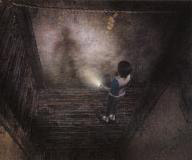 First of all, the formulaic bent of the series is starting to take its toll: heroine explores sprawling locale haunted, among others, by a powerful female ghost after a gruesome ancient ritual gone horribly wrong, with a camera that has the ability to harm spirits. You still feel isolated and vulnerable, the sound effects get under your skin, the atmosphere is thoroughly creepy and disturbing, with a special mention for the the Stained Corridor, the “Under the Floor” section (…oh god) and the Flickering Hallway, as well as ghosts such as the Crawling Woman, the Engravers and Woman Brushing. However, at this point, the ratio of gruesome Shinto rituals prone to horrific failure is really starting to pile up, straining the player’s suspension of disbelief.
First of all, the formulaic bent of the series is starting to take its toll: heroine explores sprawling locale haunted, among others, by a powerful female ghost after a gruesome ancient ritual gone horribly wrong, with a camera that has the ability to harm spirits. You still feel isolated and vulnerable, the sound effects get under your skin, the atmosphere is thoroughly creepy and disturbing, with a special mention for the the Stained Corridor, the “Under the Floor” section (…oh god) and the Flickering Hallway, as well as ghosts such as the Crawling Woman, the Engravers and Woman Brushing. However, at this point, the ratio of gruesome Shinto rituals prone to horrific failure is really starting to pile up, straining the player’s suspension of disbelief.
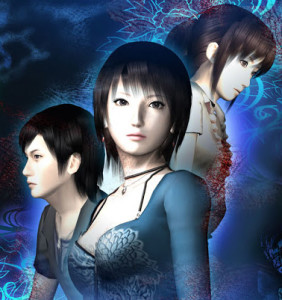 Another formulaic element: the first game featured one protagonist, the second game two. You guessed it, The Tormented has three…and, in a flight of Dickensian fancy, they’re all related, which further undermines the suspension of disbelief. The main heroine is Rei (at least her name doesn’t start with an M like in the first two games), a 23-year-old photographer, disconsolate and guilt-stricken after losing her boyfriend, Yuu, in a car accident where she was at the wheel. Working as her assistant is Miku from the first game, now 19, and still feeling guilty over her brother’s demise. Starting to see a pattern here? The third protagonist is a novelty, as he is, uncharacteristically for the series, male. Kei is a 26-year-old writer, friend of Yuu and uncle to–surprise, surprise–Mio and Mayu from the second game, meaning that he’s also got a guilt-stricken niece on his hands. Since the series subscribes to the belief that women are naturally more sensitive to the supernatural, Kei is significantly less adept at the whole ghostbusting thing than either of his female co-stars. But hey, credit where it’s due: at least he’s there, and he’s trying.
Another formulaic element: the first game featured one protagonist, the second game two. You guessed it, The Tormented has three…and, in a flight of Dickensian fancy, they’re all related, which further undermines the suspension of disbelief. The main heroine is Rei (at least her name doesn’t start with an M like in the first two games), a 23-year-old photographer, disconsolate and guilt-stricken after losing her boyfriend, Yuu, in a car accident where she was at the wheel. Working as her assistant is Miku from the first game, now 19, and still feeling guilty over her brother’s demise. Starting to see a pattern here? The third protagonist is a novelty, as he is, uncharacteristically for the series, male. Kei is a 26-year-old writer, friend of Yuu and uncle to–surprise, surprise–Mio and Mayu from the second game, meaning that he’s also got a guilt-stricken niece on his hands. Since the series subscribes to the belief that women are naturally more sensitive to the supernatural, Kei is significantly less adept at the whole ghostbusting thing than either of his female co-stars. But hey, credit where it’s due: at least he’s there, and he’s trying.
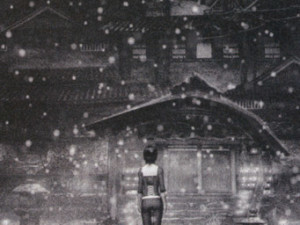 The single biggest flaw of the game, in my eyes, is the sloppiness of its narrative: it tries to do too much at once. Not only do you have three intertwining storylines, but the means of their intertwining is weak at best. Basically, there’s an urban legend that states that, if a person faces unbearable guilt and/or longing for a dead loved one, they eventually have vivid dreams of a manor, which gradually become more absorbing, the person spending more and more time asleep, until they can’t wake up anymore. Additionally, their body becomes gradually covered by a peculiar tattoo. Then one day, they simply vanish, leaving behind a dark, person-shaped stain. As you can guess, this starts to affect all three protagonists, although, in Kei’s case, it’s more by proxy, since Mio is already in the advanced stages of this affliction, and he’s simply trying to help her. Which isn’t quite playing by the rules, but you could say he feels guilty for her predicament.
The single biggest flaw of the game, in my eyes, is the sloppiness of its narrative: it tries to do too much at once. Not only do you have three intertwining storylines, but the means of their intertwining is weak at best. Basically, there’s an urban legend that states that, if a person faces unbearable guilt and/or longing for a dead loved one, they eventually have vivid dreams of a manor, which gradually become more absorbing, the person spending more and more time asleep, until they can’t wake up anymore. Additionally, their body becomes gradually covered by a peculiar tattoo. Then one day, they simply vanish, leaving behind a dark, person-shaped stain. As you can guess, this starts to affect all three protagonists, although, in Kei’s case, it’s more by proxy, since Mio is already in the advanced stages of this affliction, and he’s simply trying to help her. Which isn’t quite playing by the rules, but you could say he feels guilty for her predicament.
 This phenomenon is based on an ancient ritual, but its circumstances are so vague that it almost feels like an unnecessary addition rather than the driving force behind the game. You’re never even sure when or where it took place. And where the physical details of the rituals in the first two games were at least plausible, this one…nope. I mean, sealing a shrine in a dream? Tattoos in someone’s eyes?! There’s also something about the main villain’s anatomy that really bothers me…you’ll probably see what I mean.
This phenomenon is based on an ancient ritual, but its circumstances are so vague that it almost feels like an unnecessary addition rather than the driving force behind the game. You’re never even sure when or where it took place. And where the physical details of the rituals in the first two games were at least plausible, this one…nope. I mean, sealing a shrine in a dream? Tattoos in someone’s eyes?! There’s also something about the main villain’s anatomy that really bothers me…you’ll probably see what I mean.
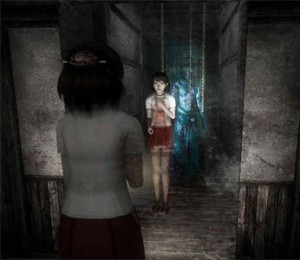 The Manor of Sleep is also a rather inchoate construct: while it has a basis in reality–the house that Rei and Miku visit at the beginning of the game–and its ‘core’ inside the dreams is the same for anyone who ‘visits’ it, it also recreates locales from each dreamer’s memory. For instance, when you’re in control of Miku, some rooms from the Himuro Mansion will appear, while when you’re in control of Kei, places from Minakami Village will pop up…even though Mio and Mayu are the ones that have been there, not him. The end result is that the game spends too much time rehashing the past and not enough time establishing its own identity, which is a glaring weakness. To add to the choppiness of the exposition, some scenes take place in the ‘real’ world, inside Rei’s apartment…which also inexplicably becomes haunted over time. Ever played Silent Hill 4: The Room? Yep, just like that. Although this does result in a shower scene that would put Psycho to shame.
The Manor of Sleep is also a rather inchoate construct: while it has a basis in reality–the house that Rei and Miku visit at the beginning of the game–and its ‘core’ inside the dreams is the same for anyone who ‘visits’ it, it also recreates locales from each dreamer’s memory. For instance, when you’re in control of Miku, some rooms from the Himuro Mansion will appear, while when you’re in control of Kei, places from Minakami Village will pop up…even though Mio and Mayu are the ones that have been there, not him. The end result is that the game spends too much time rehashing the past and not enough time establishing its own identity, which is a glaring weakness. To add to the choppiness of the exposition, some scenes take place in the ‘real’ world, inside Rei’s apartment…which also inexplicably becomes haunted over time. Ever played Silent Hill 4: The Room? Yep, just like that. Although this does result in a shower scene that would put Psycho to shame.
 Several gameplay features also make a comeback from the previous instalments. There are different difficulty settings, an alternate ending which becomes available after the first playthrough and a Mission Mode, which pits the characters against various combinations of ghosts. Each playthrough is graded at the end of the game, and you can use the accumulated points to purchase various goodies for subsequent playthroughs, such as additional lenses or costumes for the characters, although you first have to meet certain conditions (e.g. completing the Mission Mode with a certain grade) before they become available. Then there’s also the pause screen: just leave it on for a while for some…interesting results.
Several gameplay features also make a comeback from the previous instalments. There are different difficulty settings, an alternate ending which becomes available after the first playthrough and a Mission Mode, which pits the characters against various combinations of ghosts. Each playthrough is graded at the end of the game, and you can use the accumulated points to purchase various goodies for subsequent playthroughs, such as additional lenses or costumes for the characters, although you first have to meet certain conditions (e.g. completing the Mission Mode with a certain grade) before they become available. Then there’s also the pause screen: just leave it on for a while for some…interesting results.
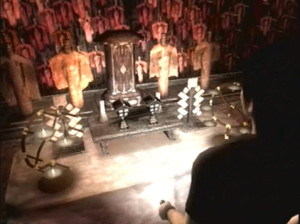 Gameplay and combat also remain basically the same, albeit with certain additions, some more successful than others. Whenever Rei falls asleep, either she or Miku or Kei will appear in the Manor (yes, this doesn’t make much sense). The goal is to explore, solve puzzles, and pick up notes and recordings. Rei can listen to these on her cassette player once she wakes up. She can also develop pictures she takes in the ‘real’ world and hand them to Miku for research purposes. At any point during a dream, you can choose to make Rei/Miku/Kei ‘wake up’ by exiting the Manor, if you find yourself running out of supplies. This will restore the character’s starting stock of camera film and respawn certain items, like Herbal Medicine or Purifying Candles (another SH4 callback). These are possibly the most annoying addition to the game: once you start finding them, they effectively put a timer on your explorations. Without a candle, the screen turns grey, and your character is not only more prone to ghost attacks, but the main villain (invincible at that point in the game; yet another recurrent situation in the series) also starts pursuing them until they either exit the dream or find another candle.
Gameplay and combat also remain basically the same, albeit with certain additions, some more successful than others. Whenever Rei falls asleep, either she or Miku or Kei will appear in the Manor (yes, this doesn’t make much sense). The goal is to explore, solve puzzles, and pick up notes and recordings. Rei can listen to these on her cassette player once she wakes up. She can also develop pictures she takes in the ‘real’ world and hand them to Miku for research purposes. At any point during a dream, you can choose to make Rei/Miku/Kei ‘wake up’ by exiting the Manor, if you find yourself running out of supplies. This will restore the character’s starting stock of camera film and respawn certain items, like Herbal Medicine or Purifying Candles (another SH4 callback). These are possibly the most annoying addition to the game: once you start finding them, they effectively put a timer on your explorations. Without a candle, the screen turns grey, and your character is not only more prone to ghost attacks, but the main villain (invincible at that point in the game; yet another recurrent situation in the series) also starts pursuing them until they either exit the dream or find another candle.
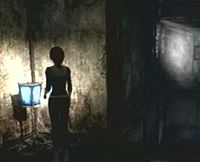 Ghosts still come in three flavours: hidden ghosts, whose presence is only signalled by the filament/capture circle of the camera turning blue; vanishing ghosts, which only appear for a short time; and hostile ghosts, which can appear randomly just about anywhere in the manor. This can happen even in a room with a save point, which is designated by a blue lantern and will become inactive if this occurs. A word of warning: there are several very difficult vanishing ghosts this time around, especially at the beginning of the game, before you reach the first save point, which means restarting if you fail to capture them…Of course, you could simply move on, but these pictures are worth quite a lot of points, which serve to upgrade the characters’ cameras.
Ghosts still come in three flavours: hidden ghosts, whose presence is only signalled by the filament/capture circle of the camera turning blue; vanishing ghosts, which only appear for a short time; and hostile ghosts, which can appear randomly just about anywhere in the manor. This can happen even in a room with a save point, which is designated by a blue lantern and will become inactive if this occurs. A word of warning: there are several very difficult vanishing ghosts this time around, especially at the beginning of the game, before you reach the first save point, which means restarting if you fail to capture them…Of course, you could simply move on, but these pictures are worth quite a lot of points, which serve to upgrade the characters’ cameras.
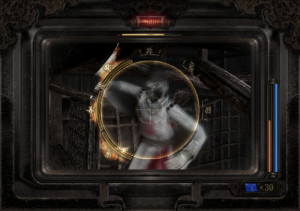 Yes, plural: in addition to having slightly different abilities, each character has a different camera. You can upgrade their basic functions (e.g. range or power), their lenses, which cost a different amount of spirit points to use (obtained from letting the camera charge up while aiming at a ghost) or their special abilities. Since there are three cameras, though, this means accumulating a LOT of points. Rei’s camera is the most balanced one, as she’s the main heroine and the one with the most screentime. Kei’s is the worst and notably doesn’t have a special ability (instead, however, he can move heavy objects and hide from ghosts). Miku can’t use lenses, but, being the most spiritually attuned of the three, she has two special abilities and a massive damage potential, in addition to being small enough to fit into crawlspaces. On top of all these camera upgrades, you will also find several add-ons that will automatically grant them new functions, such as Measure, which displays a ghost’s HP.
Yes, plural: in addition to having slightly different abilities, each character has a different camera. You can upgrade their basic functions (e.g. range or power), their lenses, which cost a different amount of spirit points to use (obtained from letting the camera charge up while aiming at a ghost) or their special abilities. Since there are three cameras, though, this means accumulating a LOT of points. Rei’s camera is the most balanced one, as she’s the main heroine and the one with the most screentime. Kei’s is the worst and notably doesn’t have a special ability (instead, however, he can move heavy objects and hide from ghosts). Miku can’t use lenses, but, being the most spiritually attuned of the three, she has two special abilities and a massive damage potential, in addition to being small enough to fit into crawlspaces. On top of all these camera upgrades, you will also find several add-ons that will automatically grant them new functions, such as Measure, which displays a ghost’s HP.
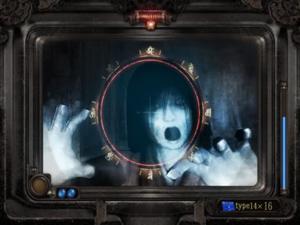 Combat happens by aiming at a ghost with the capture circle and letting the shot charge up (c.f. the symbols around the circle) for maximum power. Film functions as ammo, and higher grades of film deal more damage, but are also rarer. You also get more points for well-framed or close-up shots, as well as shots of multiple ghosts. When the capture circle turns red, you have a “Shutter Chance”, which inflicts more damage (Rei’s special ability, Flash, helps to trigger this). If you wait until the ghost is about to attack (the Alarm function helps), you may hit the infamous “Fatal Frame”, which not only deals extra damage, but also pushes the ghost backwards and leaves it open for combos: just take another photo when the screen flashes again, and you can keep going until the ghost is defeated or out of range.
Combat happens by aiming at a ghost with the capture circle and letting the shot charge up (c.f. the symbols around the circle) for maximum power. Film functions as ammo, and higher grades of film deal more damage, but are also rarer. You also get more points for well-framed or close-up shots, as well as shots of multiple ghosts. When the capture circle turns red, you have a “Shutter Chance”, which inflicts more damage (Rei’s special ability, Flash, helps to trigger this). If you wait until the ghost is about to attack (the Alarm function helps), you may hit the infamous “Fatal Frame”, which not only deals extra damage, but also pushes the ghost backwards and leaves it open for combos: just take another photo when the screen flashes again, and you can keep going until the ghost is defeated or out of range.
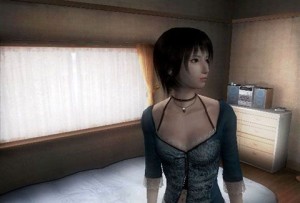 Frankly, combat is probably the most satisfying aspect of this game, which isn’t much of a compliment, because the series’ main appeal for me, up to this point, was the effectiveness of its setting and atmosphere. The old formula still works, to an extent, but it’s starting to wear at the seams, and the haphazard lore-building genuinely hurts the game. I guess the idea was to create a cohesive whole with the previous games and bring them all to a conclusion, but this robs The Tormented of its own identity. Rei’s story had potential as a standalone, but diluting it with the other two significantly weakens it, leaving it no room to spread its wings. The result is disappointment.
Frankly, combat is probably the most satisfying aspect of this game, which isn’t much of a compliment, because the series’ main appeal for me, up to this point, was the effectiveness of its setting and atmosphere. The old formula still works, to an extent, but it’s starting to wear at the seams, and the haphazard lore-building genuinely hurts the game. I guess the idea was to create a cohesive whole with the previous games and bring them all to a conclusion, but this robs The Tormented of its own identity. Rei’s story had potential as a standalone, but diluting it with the other two significantly weakens it, leaving it no room to spread its wings. The result is disappointment.

